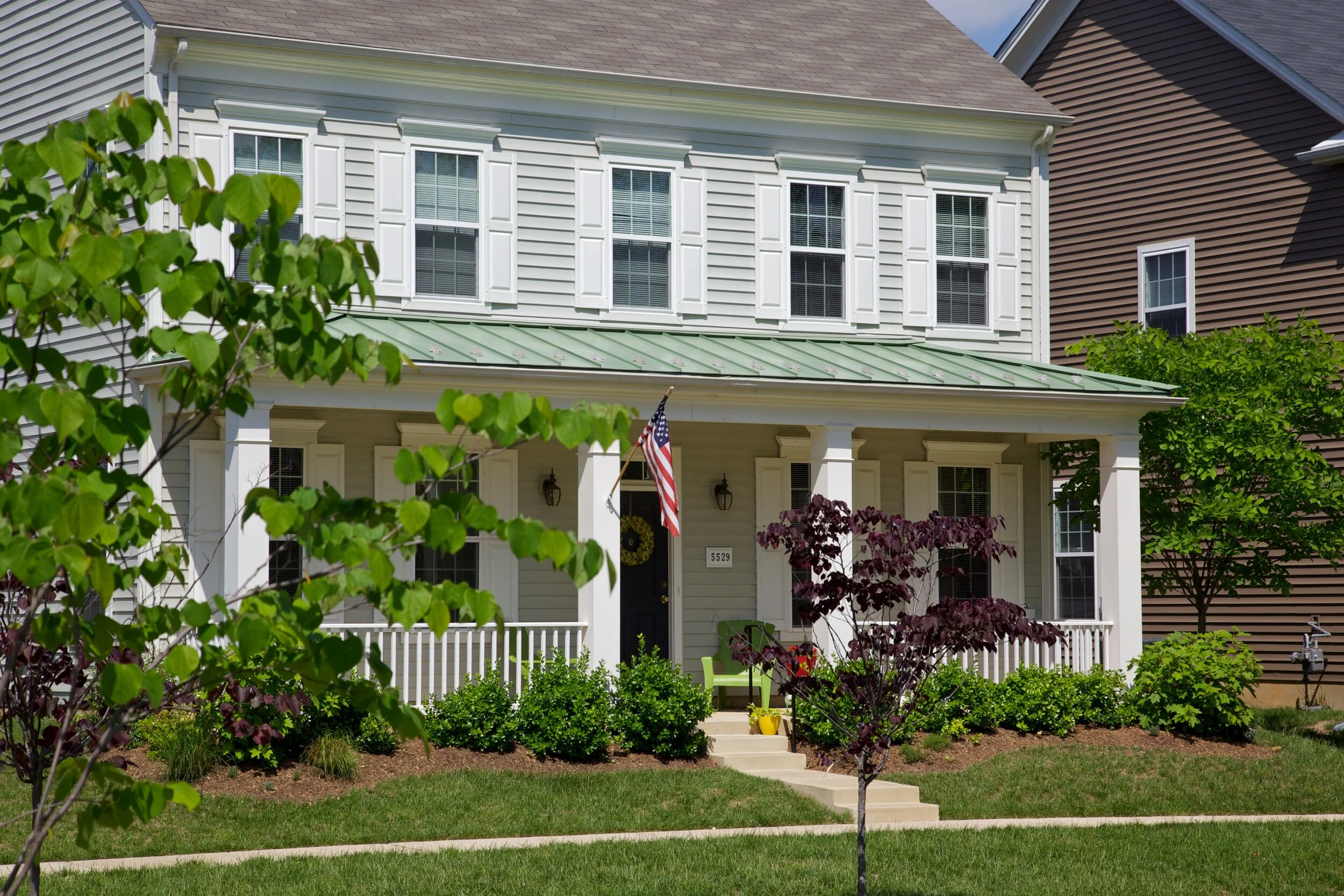Rossell Loop Village
Troops returning from duty in World War II created massive housing shortages across the nation, in both military and civilian settings. Fort Belvoir was no exception.
Fort belvoir invests in quality homes
Unlike other military installations, however, Fort Belvoir rejected a temporary housing solution in favor of well-built brick residences, such as those in Rossell Loop Village.
Location
Rossell Loop Village is located on South Post within the National Register-eligible Fort Belvoir Historic District. The village is situated at the intersection of 21st Street, Flager Road, and Mount Vernon Road. The village is located behind Flager Hall, which originally functioned as the post hospital when constructed in 1935.
Rossell Loop Village is composed of a series of looped roads branching off of Rossell Road. The majority of the buildings are located within proximity of the loops. To the south of Rossell Loop Village is a densely wooded area with a winding asphalt path leading toward the transient officers quarters and the Fort Belvoir Officers' Club.
Architectural Description
The 30 buildings of Rossell Loop Village consist of 60 four-bedroom, two-story duplex units. The first floor of each unit consists of a living room, dining room, kitchen, bedroom, full bath, and sun porch. Three bedrooms, one full bath, and a laundry room are located on the second floor.
The buildings are constructed of brick in a six-course common bond, like many of the buildings within the historic district. Composition shingles cover hipped-roofs and the dual-entrance overhangs.
Statement of Significance
Rossell Loop Village was built during a transition in Army family housing practices. After World War II, the Army experienced a severe shortage of military family housing. Consequently there was an intense search for adequate, affordable housing.
Despite public outcry, most post-war military installations turned to temporary housing in an effort to obtain housing quickly. For example, at some installations, surplus wartime trailers and deteriorated housing left over from temporary World War II construction were provided to soldiers.
Fort Belvoir developed a more permanent solution. Constructed in 1947, the buildings of Rossell Loop Village were designed as apartment-style residences with the intention that the units could easily be turned into single-family homes.
The location of Rossell Loop Village, convenient to several of Fort Belvoir's family life support facilities, underscored its importance. Located between Jadwin Loop Village and Belvoir Village, Rossell Loop Village was in close proximity to the post headquarters, the children's school, and a chapel.
Memorialization
Rossell Loop Village was named to memorialize Brig. Gen. William T. Rossell, Chief of Engineers for a short period in 1913.
Rossell came from a long line of Army officers. In 1873, he graduated third in his class at West Point and was appointed second lieutenant in the Corps of Engineers. He later returned to the Academy as an Assistant Professor of Engineers, a position he retained until 1880.
From the Academy, he was assigned to important river, harbors, and fortifications work until 1908. For the next year he was the Division Engineer for the Central Division and then served as Eastern Division Engineer until 1913.
Rossell was appointed Chief of Engineers two months before his retirement on Oct. 11, 1913. Recalled to active duty with the outbreak of World War I, Rossell continued to serve his country. He died on Oct. 11, 1919. [1]
Fast Facts
Date of Construction: 1947-48
Housed: Field Grade, Company Grade, and Senior Non-commissioned officers (NCO)
Total Units: 60
Unit Type: Duplex
Architectural Style: Modern
Designer: Unknown
Named to Memorialize: Brig. Gen. William T. Rossell, Chief of Engineers, August to October 1913
Voices: Rossell Loop Village
[ 1 ] Belvoir Castle, Jan. 14, 1966 .





